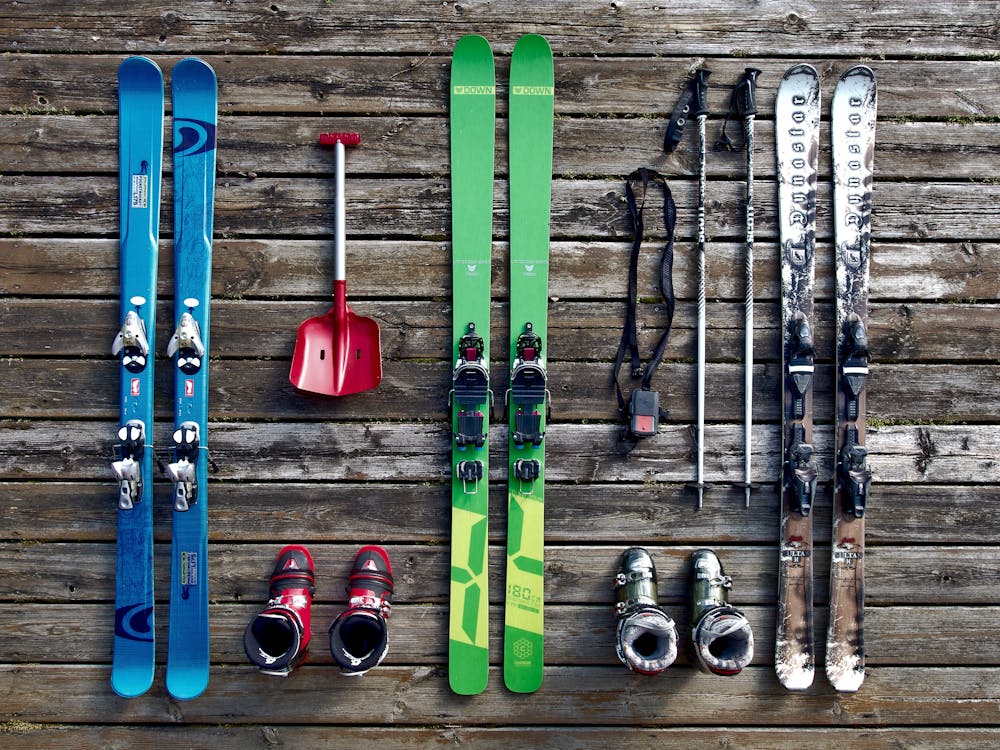Sports facility managers and owners can’t stand the sight of a wet gym floor. That’s never a pleasant sight to see first thing in the morning. Now that winter is here, it’s no longer a question of “if” the sports floor will get wet, but “when.” These cold and dreary months are full of ice, snow, and the occasional rainstorm. As a sports facility owner or manager, you’ll want to come up with effective maintenance plans to protect your sports floor now that winter is here.
Water damage is the biggest threat to hardwood gym floors.
It is true – most of the sports wood gym floors eventually run into water damage or over-usage that shrinks the lifetime value of their sports gym floor. The winter months are some of the most important times of the year to pay close attention to potential water damage. Preventative measures will ensure that your investment in the sports facility is safe.
Sure, managers and owners are knowledgeable about changing winter conditions such as temperature and humidity. Still, the majority of them run into another obstacle entirely when it comes to safeguarding the wood sports floor from other inevitable winter weather elements – ice and snow being the big ones.
Keeping that in mind, here are some of the preventative maintenance ideas you can implement right now to protect the floor and increase the lifetime value of your gym facility.

1. Develop a routine cleaning schedule for the gym this winter.
The winter is a hectic and busy time for sporting activities. There is only so much beating your gym floor can take during basketball games and other events. It’s vital to create and implement a plan that protects the lifetime value of your wood floor in winter. The trick is to devise a regular cleaning schedule spot cleaning and dust mopping. These small investments into the health of your floor can go a long way in ensuring the integrity of the wood, and user’s safety. For private gym owners, a clean facility can go a long way in retaining customers and protecting your business’s image.
2. Put doormats at entrances and exits to collect snow, ice, & debris.
As they say, a pound of prevention is worth a pound of cure. Preventive maintenance is the best thing you can do for your wood gym floor this winter. One of the simplest ways to prevent winter water damage is to use affordable door mats at entry ways. When athletes and spectators enter the gym, they will track snow, mud, ice and salt debris into the building. Doormats prevent melted ice and snow from pooling and harming the floor. They also make it easy for visitors to wipe the bottom of their shoes and prevent mud and muck from getting tracked throughout the facility. Wood floors will suffer under the added weight of pooling water – a killer of wood floors. Lastly, door mats can help catch debris before they are tracked in to your gym, avoiding scratches or corrosion to the finish.
Put doormats at each entrance of the gym this winter, preferably before the first snowstorm hits so you don’t have to scramble around at the last minute.
3. Use floor coverings when the floor isn’t in use.
There is a good chance your gym floors are in use for more than just sporting events. The floors probably see a decent amount of downtime, too. When your sports floor is not in use for a game, conference, or performance, cover the floor to safeguard it from constant foot traffic and other potential damages. Make sure to give the floor a good cleaning prior to putting down covers to avoid unwanted debris underneath scratching the finish.
4. Make sure indoor conditions are within a healthy range.
Extreme temperature swings and harsh winter weather can do a number on your hardwood floors. During times of low temps and low humidity, wood flooring will shrink and risks cracking. The solution is to maintain a favorable indoor climate. Suitable temperature for your gym floor would be in the 60s or 70s. Also, keep humidity ratios from 35% to 50% to prevent shrinkage and damage.
5. Adequately maintain the plumbing in the sports facility.
Cold weather can freeze and break water pipes if you’re not careful. Flooding from frozen pipes that have broken will cause severe cupping and buckling of the floor if water is left to pool. In cases where the gym floor has been left soaking in stagnant floodwater, the wood floorboards can become severely warped. In these cases, the only fix is a complete reinstallation of the gym floor. It may seem like the only thing you need to maintain to protect the gym floor is the wood itself. But the HVAC and the plumbing systems are equally crucial for ensuring a safe environment for the gym and those who use it.
Make sure the facility maintains an adequate temperature to prevent expansion and contraction in the wood and to prevent the pipes from breaking. Also, ensure the pipes are adequately insulated. Pipe insulation will do two things to protect the gym floor this winter:
- Prevents freezing and breakage
- Reduces humidity
When cold water pipes contact with warmer ambient temps, the pipes will form condensation. Insulation helps to absorb this excess water that can increase humidity levels too much in the sports facility, causing expansion in the wood floor.
Protecting Sports Floors in Winter: A Takeaway Message
Winter is a rough time of the year for wood gym floors. The slightest decrease in temperature can impact the floor’s condition for a long time. With the help of the above tips, you can safeguard your sports floor during this busy, and often messy, time of year.
Has your wood gym floor suffered damage from excess water, heat, and humidity? We can help. Call us today at J&J Gym Floors at (973) 801-7219 to schedule a consultation with our expert gym flooring contractors.

